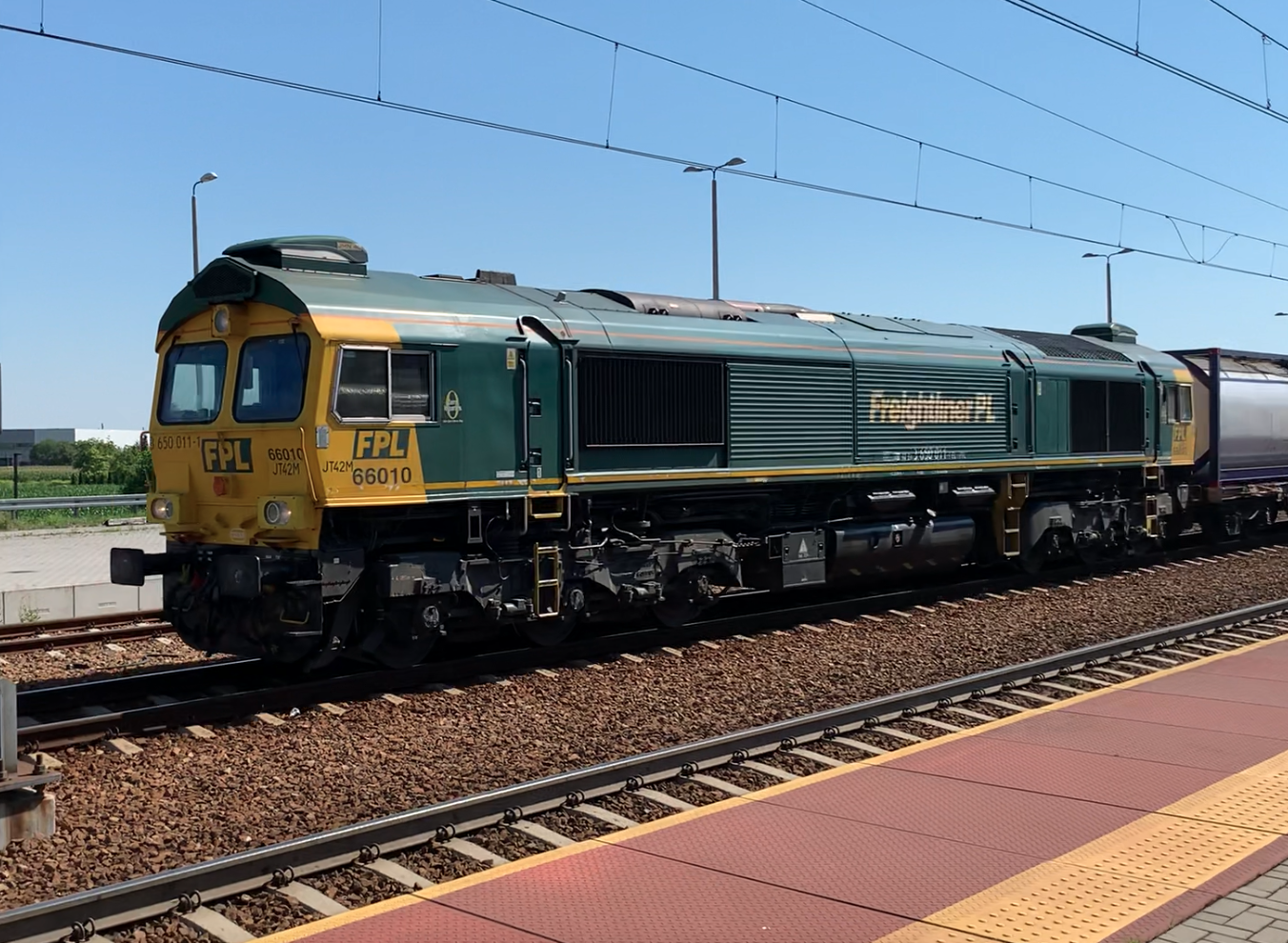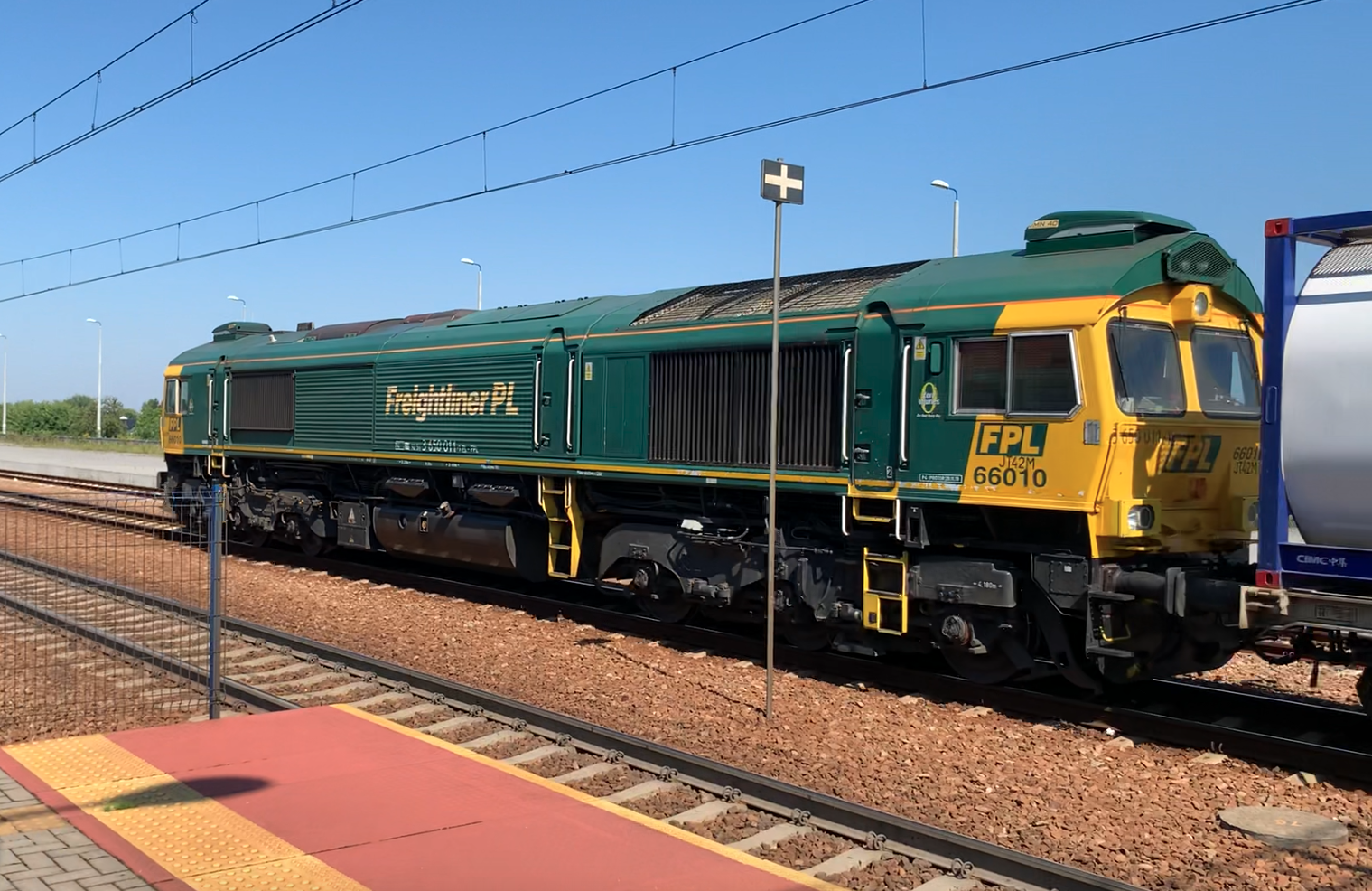Kraków 2022-08-16
Diesel locomotives JT42CWRM Class 66.
Diesel locomotives type JT42CWRM Class 66 is a series of standard-gauge diesel locomotives with electric transmission, of universal character. However, due to their high power, these locomotives are mainly used in freight traffic. The Class 66 locomotive is a development of the successful Class 59 series. The locomotive is manufactured by Electro-Motive Diesel, a company established in the USA, closely cooperating with factories in the UK.
The Class 66 locomotive was developed especially for the company English, Welsh and Scottish Railway Ltd, EWS for short, for line operation. However, due to high reliability, Class 66 locomotives were ordered by other carriers and were also delivered to foreign recipients. In Poland, these locomotives were delivered to Freightliner PL. In Poland, Class 66 locomotives have been in operation since 2007. Air conditioning has been installed in Polish vehicles. Production was carried out in the period 1998 - 2018. 658 copies were produced, of which 290 went outside the UK.



Polish record Class 66.
In 2020, Freightliner PL set a record for the transport of goods. The company completed the journey of the heaviest and longest freight train in history, which was driven by a single Class 66 diesel locomotive. The train transported construction aggregate on standard-gauge lines. In addition, on screw couplings. The record train consisted of the JT42M Class66 locomotive (66606) and 64 Eanos series E06B cars. The wagons are only 11.30 m long and have a low curb weight. The train was within the 750 m length limit and 745 m long. The gross weight of the train was 5,167 tons. The train transported 4,020 tons of aggregate. The train was composed of two trains in Tarnowskie Góry. The train started on April 27, 2020, at 5:28. The train traveled 190 km and at 11.55 it stopped at the siding of the Łódź Olechów station. The average travel speed was 39 km / h. There was one stop.
Class 66 design.
Class 66 has a Co 'Co' running gear, but the central axis of each of the bogies is moved along the axis. As a result, the minimum radius of the curve that the Class 66 can cover is only 80 m. The frames of the bogies are cast, which is not used in vehicles manufactured in Europe. The locomotive's body is made of steel sheets. Driver's cabins are located at both ends of the vehicle.
However, the Class 66 locomotive also has disadvantages. Driver's cabins are poorly soundproofed and poorly thermally insulated. The cabins are not air-conditioned and are also not heated. The heat is only from the engine. Air conditioning has been installed in Poland. The internal combustion engine has a small bifurcation angle, which causes more vibration and noise.
The vehicle is powered by a V-type EMD 12N-710G3B-T2 two-stroke engine, 2,420 kW with turbocharging. The maximum engine speed is 904 revolutions per minute. The engine is equipped with electronically controlled unit injectors. The locomotives have fuel tanks of 6,400 liters (1,400 imp gal; 1,700 US gal). The fuel tanks are placed under the locomotive's body, between the bogies. General Motors AR8PHEH electric transmission. The vehicle is equipped with 6 General Motors traction electric motors, type D43TR, independently driving each axle. Manufacturers of the entire unit guarantee a long period between repairs.
Data T-T Class 66:
Co'Co 'axis system. Gross weight is 126,900 kg (124.9 long tons; 139.9 short tons). Length 21.35 m (70 ft 1 in). 2.64 m (8 ft 8 in) wide. Height 3.9 m (12 ft 10 in). Design speed 120 km / h. The maximum tractive force is 409 kN. Westinghouse type electro-pneumatic brake system.
Written by Karol Placha Hetman
